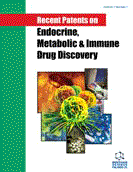Abstract
Background: Gynecomastia may occur physiologically in the neonatal period, during puberty, and in old age. It may also develop in association with various pathologic states. The challenge for the physician is to distinguish physiological gynecomastia from those with an underlying pathology.
Objective: To review in depth the pathophysiology, clinical manifestations, and treatment of gynecomastia. Method: A PubMed search was completed in Clinical Queries using the key term “gynecomastia”. Patents were searched using the key term “gynecomastia” from www.google.com/patents, www.uspto.gov, and www.freepatentsonline.com. Results: Gynecomastia is caused by an imbalance between the stimulatory effect of estrogen and the inhibitory effect of androgen at the breast tissue level. Clinically, gynecomastia is characterized by the presence of a firm or rubbery, discrete, subareolar ridge of glandular tissue that is symmetrical in shape, freely movable, and nonadherent to skin or underlying tissue. Since most cases of physiological gynecomastia regress spontaneously with time, reassurance is all that is necessary. For pathological gynecomastia, treatment should be directed at the underlying cause, if possible. If gynecomastia persists in spite of the above measures, pharmacologic therapy and reduction mammoplasty may be considered. Recent patents related to the management of gynecomastia are discussed. Conclusion: The majority of cases are physiological and do not require treatment other than reassurance. For pathological cases, the underlying cause should be treated if possible. If gynecomastia persists in spite of the above measures and treatment becomes necessary, tamoxifen is the treatment of choice. Reduction mammoplasty may be considered for resistant cases.Keywords: Androgen, breast enlargement, estrogen, male, mammoplasty, neonatal, pathological, puberty, tamoxifen.
Article Metrics
 130
130





















